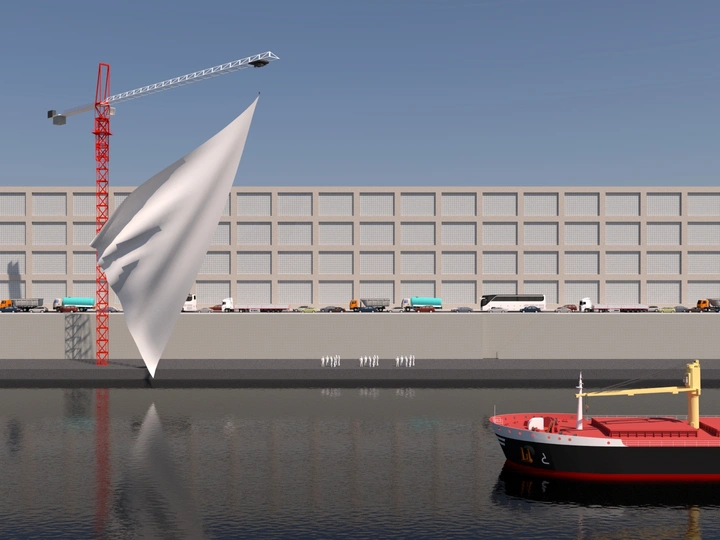Pollution Surface

Tadas Stalyga is an interdisciplinary art practitioner and researcher. In 2020 he received a doctoral degree at Royal Birmingham Conservatoire (UK). His work was exhibited in the UK, Denmark, Latvia, and Lithuania. From 2018 he has been an undergraduate lecturer at Vilnius College of Design. In 2022 Tadas was awarded the status of a professional arts practitioner by the Republic of Lithuania.
At present, Tadas is working on the framework developed for his doctoral thesis titled Out of Place. Interdisciplinary in nature, the framework blends spatiality, visuality, and language, and examines creative process as a series of know-how displacements between separate artistic domains.
Conceived as a temporary public landmark, the work evolves through the process of absorption of pollutants from the surrounding environment. As it begins to exhibit marks of contamination, pollution becomes physically palpable. In turn, such marks create the ground for questioning the quality of the environment, and its effects on one’s body.
The realization of the concept is contingent on an appropriate site, materiality, and duration. In terms of site, industrial areas and heavy traffic arteries are preferable. Usually, such locations display high degrees of contamination, thus not only ensuring adequate interaction with pollutants but also becoming sites where change is most urgent. Secondly, high traffic density enables us to ‘capture’ the rush-hour commuters and to turn them into an audience that actively contributes to the evolution of work. As for materiality, recent studies at Cornell University (US) and the Indian Institute of Technology have produced a range of functional textiles. The fabrics in question, show much greater uptakes of pollutants from air and water than regular textiles, thus making them highly suitable for exposing pollution. Finally, as the quality (or the lack of) of the surrounding air and water is revealed through the process of dirtying, a sufficient duration of exposure is crucial. The gradual change that the work undergoes (pure > contaminated) forms the basis for a critical reexamination of the cumulative effects of pollution.
As the exhibition in the public space concludes, the textiles should be submitted for further study. Here, the traces of pollutants, for example, CO2, lead (air), nutrients, and oil (water) would be analyzed in order to better understand the level of pollution in the site. The outcomes of the study can be used for a series of exhibitions where the findings are disseminated and discussed.